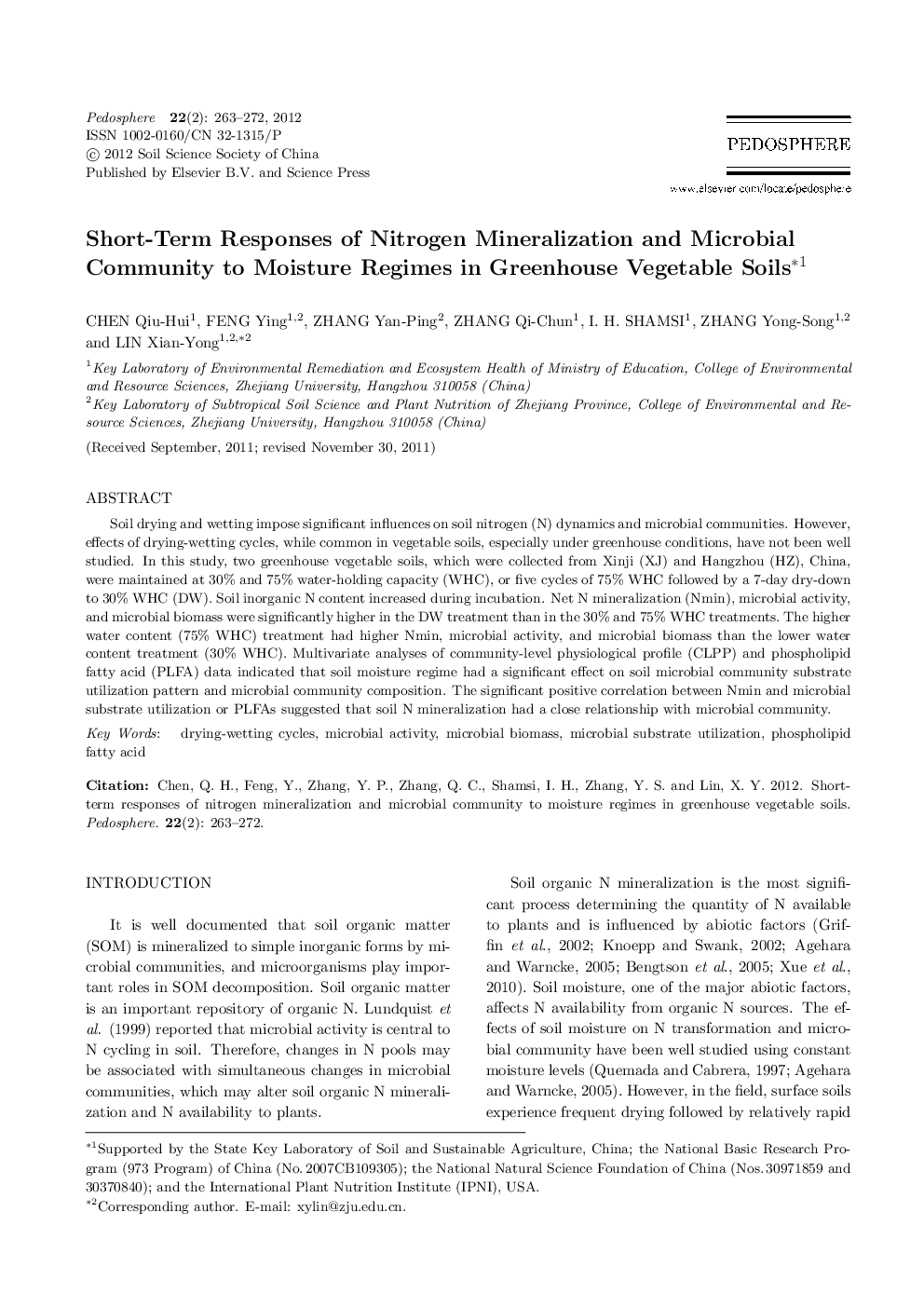| Article ID | Journal | Published Year | Pages | File Type |
|---|---|---|---|---|
| 4581643 | Pedosphere | 2012 | 10 Pages |
Soil drying and wetting impose significant influences on soil nitrogen (N) dynamics and microbial communities. However, effects of drying-wetting cycles, while common in vegetable soils, especially under greenhouse conditions, have not been well studied. In this study, two greenhouse vegetable soils, which were collected from Xinji (XJ) and Hangzhou (HZ), China, were maintained at 30% and 75% water-holding capacity (WHC), or five cycles of 75% WHC followed by a 7-day dry-down to 30% WHC (DW). Soil inorganic N content increased during incubation. Net N mineralization (Nmin), microbial activity, and microbial biomass were significantly higher in the DW treatment than in the 30% and 75% WHC treatments. The higher water content (75% WHC) treatment had higher Nmin, microbial activity, and microbial biomass than the lower water content treatment (30% WHC). Multivariate analyses of community-level physiological profile (CLPP) and phospholipid fatty acid (PLFA) data indicated that soil moisture regime had a significant effect on soil microbial community substrate utilization pattern and microbial community composition. The significant positive correlation between Nmin and microbial substrate utilization or PLFAs suggested that soil N mineralization had a close relationship with microbial community.
